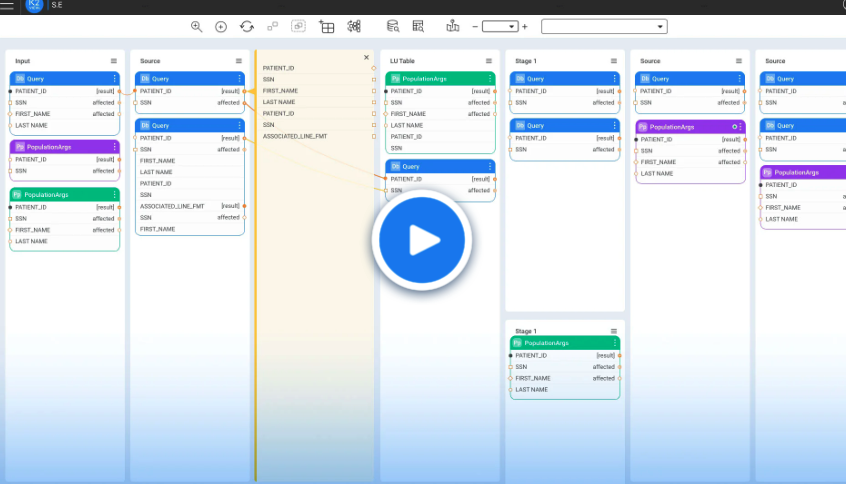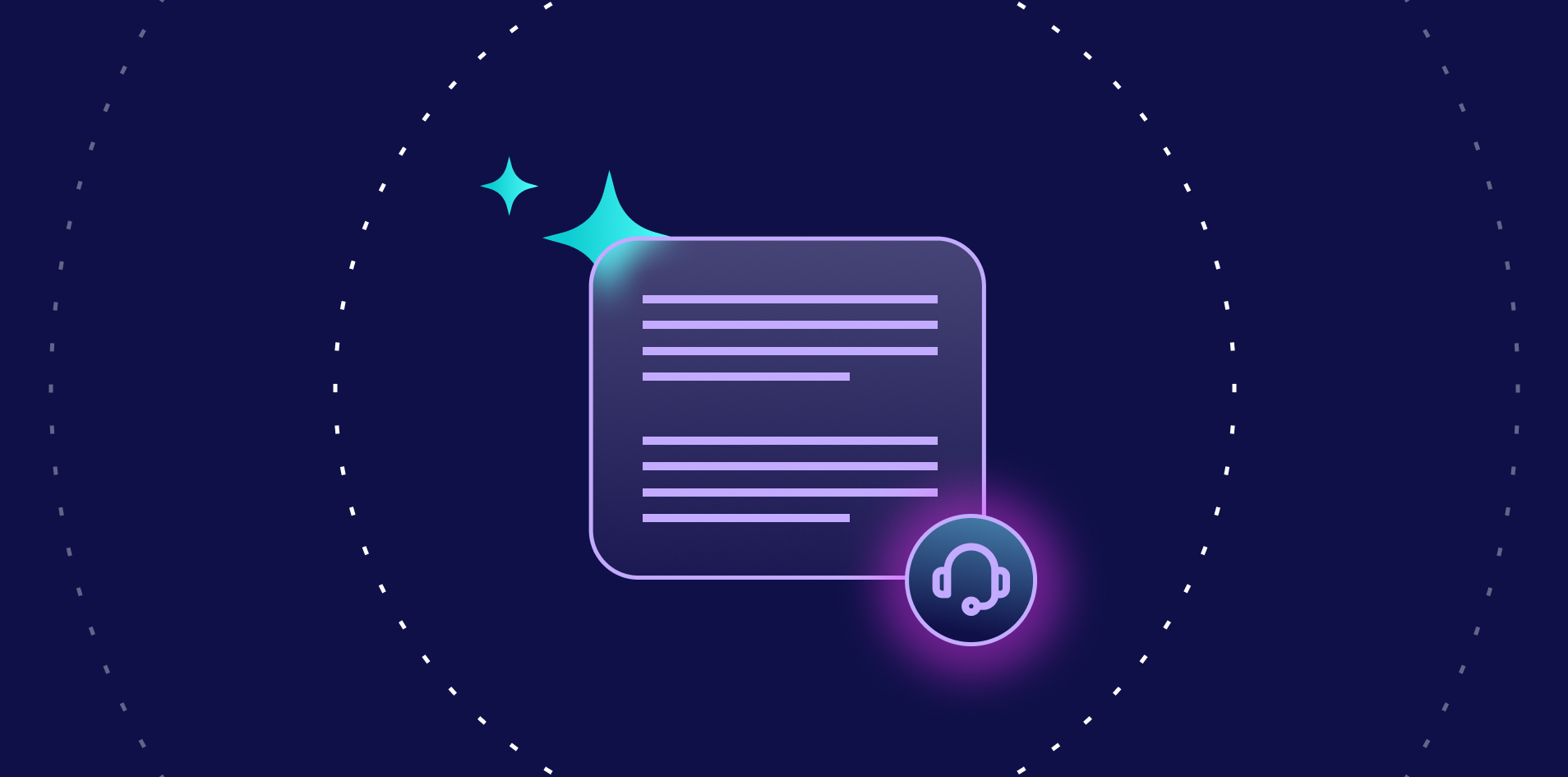Agent assist is AI tech that provides real-time guidance, contextual insights, and business recommendations to customer service agents during interactions.
What is agent assist?
Customer service has always been a balancing act between efficiency and empathy. While conversational AI chatbots handle routine inquiries admirably, complex customer issues still require human intervention. Agent assist technology bridges this gap by combining human expertise with AI-driven intelligence, creating a hybrid approach that delivers both operational efficiency and personalized customer experiences.
The agent assist paradigm
Agent assist represents a fundamental shift from replacement-based automation to augmentation-focused AI. Rather than eliminating human agents, this technology enhances their capabilities by providing real-time decision support, contextual information retrieval, and intelligent recommendations during customer interactions.
The technology operates as an AI-powered copilot that analyzes customer conversations using Natural Language Processing (NLP), extracts relevant context, and surfaces actionable insights. For example, when a customer mentions billing discrepancies, agent assist immediately retrieves their account history, recent transactions, and relevant policy information – mid-conversation.
Unlike traditional customer service chatbots that follow predetermined scripts, agent assist adapts to each unique situation using machine learning algorithms to understand conversation patterns, customer sentiment, and business context.
Agent assist architecture and capabilities
Modern agent assist systems combine Natural Language Understanding (NLU) engines that analyze customer communications in real-time, identifying intent, extracting key entities, and assessing emotional tone. This analysis feeds into recommendation engines that match current contexts with historical patterns and available solutions.
Agent assist software can transcribe calls in real-time and automatically summarize interactions using Large Language Models (LLMs), reducing post-call follow-up work and improving documentation quality. Speech recognition capabilities now include sentiment analysis and conversational flow management, detecting when conversations are escalating and suggesting appropriate response strategies.
The most advanced implementations integrate with conversational AI platforms through APIs that enable bidirectional data flow, continuously updating understanding and refining suggestions as conversations progress.
Business impact of agent assist
Organizations implementing agent assist report substantial improvements across key performance indicators.
According to Google, human agents equipped with AI assistance handle 28% more conversations per shift – stemming from reduced information lookup time and more efficient issue resolution processes – with customer satisfaction improving by 10% on average across implementations.
IBM research indicates that agent assist can:
-
Boost customer satisfaction with answers by as much as 150%
-
Reduce issue resolution time by 26%
-
Decrease response times by 15%
It cited Bradesco Bank’s agent assist platform, which processes 283,000 customer service questions monthly across 62 different products – achieving 95% accuracy rates with response times measured in seconds – and Crédit Mutuel's system, which processes 350,000 daily emails, enabling advisors to find answers 60% faster.
Agent assist industry applications and use cases
Conversational AI in healthcare applications use agent assist for appointment scheduling, insurance verification, and patient education, while maintaining strict compliance with healthcare privacy regulations.
Financial services organizations leverage agent assist to help advisors navigate complex product portfolios and compliance requirements.
Combining the data from these two industries, Humana's agent assist implementation handles 7,000 voice calls from 120 healthcare providers daily, using specialized healthcare terminology training to manage complex insurance coverage inquiries.
In IT support environments, agent assist provides solutions related to application documentation, ticket management systems, and troubleshooting procedures. IBM's internal implementation spans 650 projects, demonstrating scalability across large enterprise environments.
The agent assist data integration challenge
Enterprise data fragmentation poses the primary challenge for agent assist effectiveness. Customer information typically spans multiple systems – CRM platforms, billing databases, product catalogs, and support ticketing systems. Traditional solutions often can't access this distributed data effectively, leaving agents with incomplete customer contexts.
RAG conversational AI addresses this limitation by enabling real-time data retrieval from multiple enterprise sources. Instead of relying on static knowledge bases that quickly become outdated, RAG-powered agent assist systems access live customer data, ensuring recommendations reflect current, comprehensive information.
This approach supports hyper-personalization by pulling customer purchase history, support interactions, and usage patterns in real-time, enabling agents to provide tailored recommendations and resolve specific issues with complete context.
Agent assist and conversational AI convergence
The distinction between agent assist and other AI customer service approaches lies in their operational philosophy.
While AI virtual assistants and automated systems handle interactions independently, agent assist focuses on human-AI collaboration.
This hybrid model proves particularly valuable for complex scenarios requiring empathy, creative problem-solving, and nuanced judgment. Agent assist combines AI efficiency with human emotional intelligence, creating customer experiences that feel both responsive and genuinely helpful.
The technology also addresses training challenges by providing new agents with AI-powered guidance while they develop expertise. Rather than requiring extensive memorization of policies and procedures, agents can focus on customer relationship skills while relying on AI for information support.
Implementation strategies and challenges
Successful agent assist deployment requires careful attention to integration complexity and change management. The most effective implementations prioritize seamless workflow integration, ensuring AI assistance enhances rather than disrupts existing processes.
Data quality for AI represents a critical success factor. If underlying customer data is incomplete, outdated, or inconsistent across systems, even sophisticated AI will struggle to provide valuable guidance. Organizations must address data readiness and integration challenges before expecting optimal results.
Change management requires positioning agent assist as an empowerment tool rather than a replacement threat. Agents need to understand how AI assistance reduces administrative burden and enables them to focus on higher-value activities like relationship building and complex problem-solving.
Discover GenAI Data Fusion, the suite of RAG tools that powers agent assist in enterprise applications.
GenAI Data Fusion: The AI assist enterprise solution
K2view's GenAI Data Fusion transforms agent assist from a helpful tool to a competitive advantage. While most solutions struggle with data fragmentation and outdated information, GenAI Data Fusion provides real-time access to unified enterprise data across all systems, ensuring agents have complete, current customer contexts during every interaction.
The platform's patented Micro-Database™ technology retrieves AI-ready data from existing CRM and ERP platforms at conversational latency of less than 200ms. This creates dynamic data products that present unified customer views in real-time, enabling truly personalized service based on complete customer understanding.
Unlike point solutions requiring extensive integration work, GenAI Data Fusion seamlessly connects disparate enterprise systems, providing agents with comprehensive customer insights that inform every recommendation and decision.














